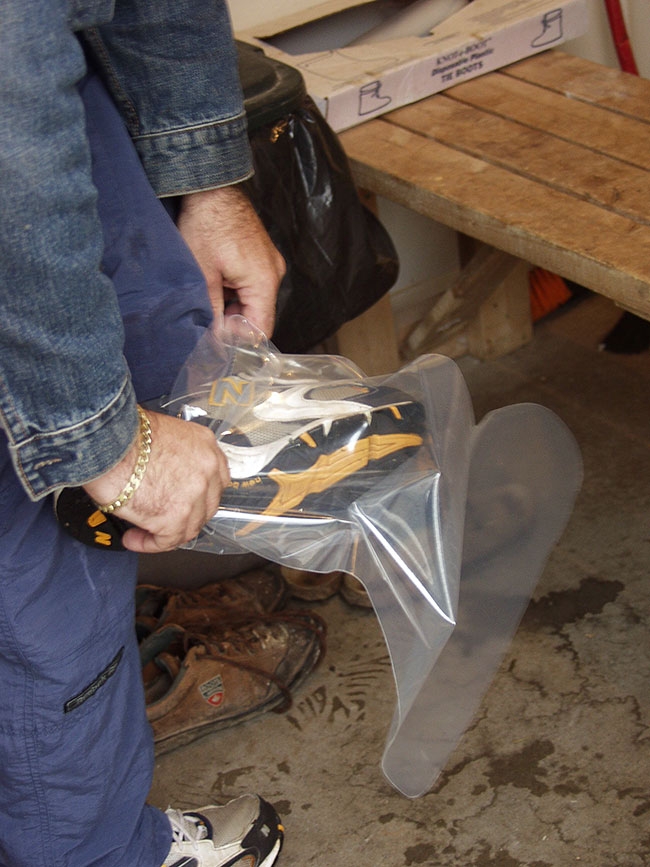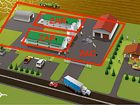
Why is biosecurity so difficult?
By Karen Dallimore
Features Barn Management Production Biosecurity Canada Diseases Poultry Production Poultry Research ProtectionOvercoming human nature is an important step in managing infectious disease.
 Small Steps, big challenges
Small Steps, big challenges They’re an ancient foe, a worthy opponent. For over 300 million years, we’ve been battling the bugs of infectious disease – but are we winning?
Our best weapon for infectious disease control is biosecurity, according to J.P. Vaillancourt, but he’s quick to point out how badly we do it and says it comes down to human nature.
Working with both swine and poultry, Vaillancourt has helped design and test emergency measures for avian influenza (AI) and foot-and-mouth disease via simulations in North Carolina, Ontario, Quebec, and New Brunswick, working closely with the Canadian Food Inspection Agency advisory committees for the control of infectious diseases in poultry, pigs and beef cattle. He is currently a veterinary professor at the University of Montreal and leading the poultry sector of the World Veterinary Education in Production Animal Health organization based at the University of Luxemburg.
Addressing a crowd at the Be Seen, Be Safe Building Better Biosecurity Forum in Guelph, Ont., Vaillancourt said that since 1940, 335 emerging infectious diseases have been identified in humans. Of the 1,462 infectious diseases that are catalogued, 875 are zoonotic – transmissible between animals and humans. Avian influenza, Zika, and Ebola are just a few diseases re-emerging, shifting and “active.”
“We’ve had emerging and re-emerging disease for a long time,” Vaillancourt said. Some are just new strains of known viruses and bacteria showing different clinical signs, pathogenicity and virulence.
These diseases are nothing new, but these days we’re moving people, animals and goods very quickly around the world. Birds are being flown across the continent, carrying diseases like Newcastle with them, quickly spreading disease through native populations.
Disease is also stigmatized; people sometimes knowingly allow it to disperse and seed areas with infection instead of admitting there is a problem. The reason for this comes down to more than just economics; people keep quiet because they are embarrassed to be considered a source of disease spread.
Climate change has also encouraged diseases such as bluetongue to manifest in new frontiers. Once considered an exotic disease, bluetongue is now found throughout Europe and in North America. High pathogenic AI was first identified in 1959; now, at least seven AI strains have been identified in France and three are highly pathogenic.
The importance of biosecurity
Biosecurity measures are becoming increasingly important as proven tools for preventing the spread of disease. For example, research has shown that campylobacter infections are five times more likely if there is a manure pile within 200 metres of the barn. The risk of Salmonella is seven times higher when cars are parked near the barn and three times higher when barn doors are left unlocked. Low pathogenic AI can be isolated 70 metres from the barn, and yet we park our cars next to the exhaust fans. Campylobacter is five times less likely to cause infection if you simply wash boots and hands. Many bugs are not all that resistant; simple soap will get rid of them. Don’t share equipment unless you have a strict sanitation procedure, restrict farm access to visitors, change your boots and sign a log book. “We know it works,” Vaillancourt said.
Under Vaillancourt’s supervision, PhD student Manon Racicot conducted a study that monitored three groups of farm workers using hidden cameras. Here’s an example of how bad we can be at biosecurity: only 71 per cent of the workers monitored were in compliance with the use of coveralls and only one-third wrote something in the logbook – which wasn’t even necessarily the correct information. “This is not high tech,” Vaillancourt said. “It’s 2016 and we’re still trying to convince people to do this.”
Vaillancourt says it’s human nature – people don’t want to do things unless it makes their lives easier and there are a long list of reasons as to why people don’t adhere to biosecurity rules: everything from lack of knowledge, lack of training or time, economics, language or communication issues, incoherent information or difficulty applying biosecurity measures because of inadequate change areas. There could also be little or no adherence due to personal beliefs, attitudes, culture, or perception.
Pathogen spread has a list of factors of its own, ranging from topography to wind and weather, and affected by temperature and humidity, insects and rodents, or barn traffic. The concentration of the pathogen and the distance it will travel are additional considerations. But transmission can be as simple as having the meter reader, who may have little or no biosecurity awareness, go from farm to farm.
Vaillancourt said, however, that it’s not all cut-and-dried yet. We have seen a pathogen go from farm to farm, but not travel between barns within one farm, and he’s not sure why.
One critical factor in biosecurity is the location of the farm and the size of its neighbours. While a planner may see three farms next to one another, nature takes an epidemiological view, seeing “one big fat juicy site.” Vaillancourt showed a photo of a new turkey farm in Minnesota: It had been designed economically, but was built near the road with multiple entrances and next to a large pond, so there should have been a risk assessment completed.
Why didn’t someone do a risk assessment? Some of the regulations for biosecurity standards in Canada attempt to remain palatable for everything from backyard to mega-farms, such as the distance between farms, rendering them marginal or inadequate. That is another area that needs to be addressed, said Vaillancourt. But overall, we’re not doing well with our biosecurity measurements. He pointed to the need for better partnerships and more data sharing, as there is a lot of communication but low adoption. It takes clarity and commitment, especially from management, as well as discipline and accountability to make biosecurity work.
In Canada, we are at less risk of some disease because of our climate. Keeping animals indoors can be a positive factor unless we increase our regional farm density to levels seen in the United States. At certain times, depopulation is the only control measure that will be effective, but with sites in Iowa holding as many as six million layers, for example, Vaillancourt suggested that the numbers become “insane.” In outbreak situations, surveillance may be appropriate under certain circumstances, but at a high population density, we’ve been hit with the reality that if you don’t depopulate, you won’t control the disease.
Vaillancourt called on industry leadership to make important diseases such as mycoplasmosis and infectious laryngotracheitis reportable and provide standing committees in partnership with provincial governments, as a federal level perspective often reaches beyond local needs. When biosecurity becomes national or international, it can become a sensitive political issue that needs to be handled well.
The first step is to acknowledge there is a problem. “We need a concentrated effort,” Vaillancourt said, in reference to all farm sectors, not just poultry. The communication behind this will take effort but the technology to make it happen exists.
Print this page

